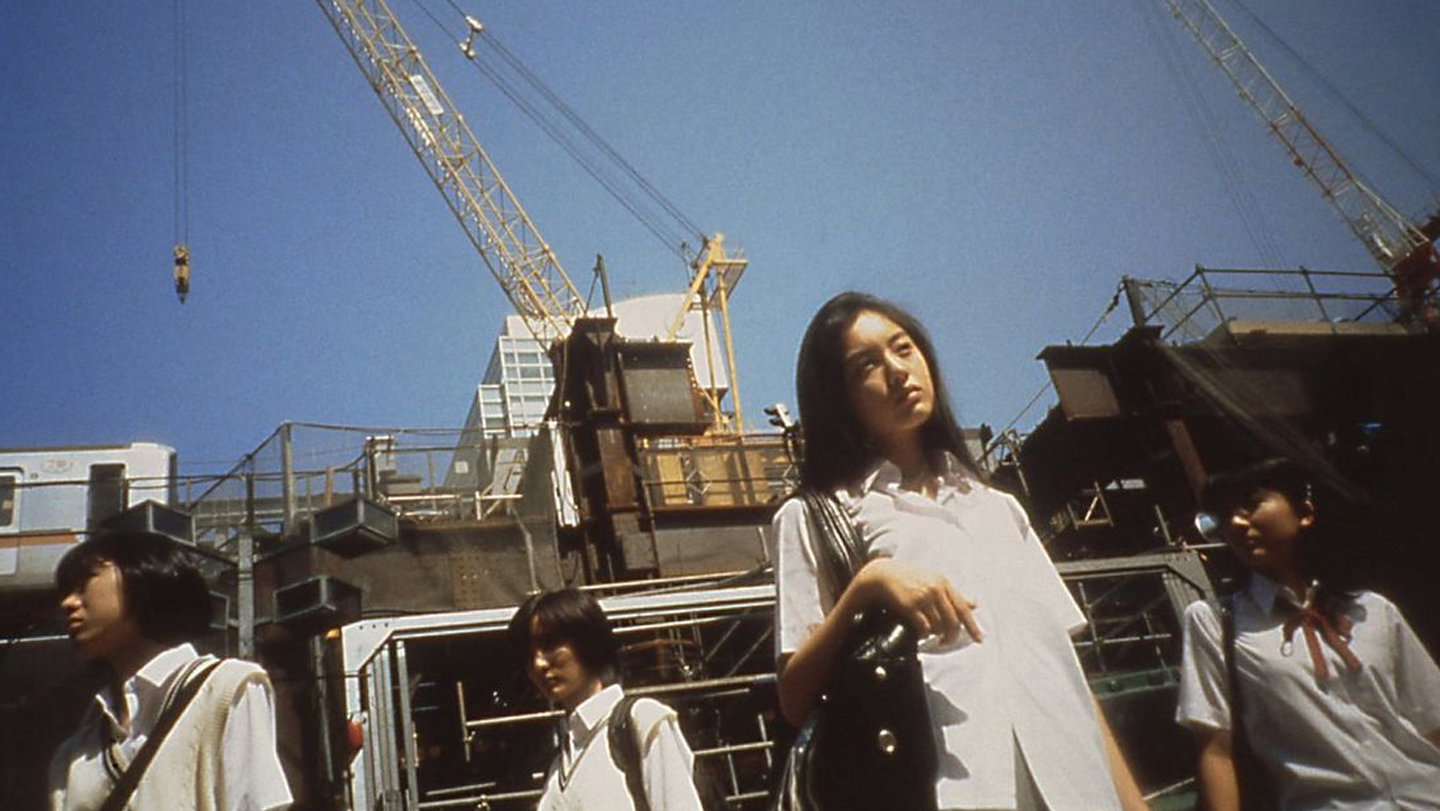Probably best known for his enduring and critically beloved 90s series Neon Genesis Evangelion, the work of Hideaki Anno moves with a unique cadence, approaching classic genre thrills from new visual perspectives. A co-founder of the animation studio Gainax (who also famously worked on Hayao Miyazaki’s Nausicaa of the Valley of the Wind), his filmography is more expansive than one might expect: the Japanese director has proven equally inventive with his work in live-action, in some instances bringing the two mediums together.
Certain visual signatures hold across his animation and live-action work, such as a distinct, rapid fire rhythm of editing; heavy use of intertitles and mixed media; and pet themes of psychological torment and pop cultural mash-ups (his 1988 animated series Gunbuster, is both a space opera and a riff on a tennis anime). Those stylistic tics hold together heartfelt stories of self-actualisation, of finding one’s place in an alienating world, reflecting on the intangible boundaries between people.
Beyond his lasting influence on the world of animation, Anno’s keen cinematographic interests and experimental sensibilities, even within franchise film, make him one of the most versatile, exciting directors to watch today.
The entry point is… Shin Godzilla
When he first appeared in 1954 Godzilla was an embodiment of nuclear fallout, a response to a terrifying weapon. Anno’s film Shin Godzilla (‘shin’ meaning ‘new’), co-directed with Shinji Higuchi, turns him into an allegorical response to the Great East Japan Earthquake and tsunami and resultant Fukushima Daiichi nuclear disaster, in part by playing the film as satire. Though Shin Godzilla is (indirectly) dealing with heavy subject matter and nightmarish imagery of urban destruction, it’s also incredibly playful — full of creative blocking and camerawork and funny depictions of the various hapless bureaucrats scrambling to solve the Godzilla problem.
It’s also simply a great kaiju film, an amusing and disturbing reinvention of an iconic monster, the atomic lizard appearing more jagged and grotesque than ever.
Necessary viewing? Ritual/Shiki-Jitsu
Based on the novel Tōhimu by Ayako Fujitani (Steven Seagal’s daughter, who also stars in the film adaptation), Ritual is an often distressing meditation on intense self-loathing. An unnamed filmmaker (played by director Shunji Iwai) comes across an unnamed woman (Fujitani). Both of them are in depressive spirals, but are coping in radically different fashions. The plot is sparing, the pacing lethargic. We simply watch this duo spend time together.
Ritual feels like a codification of Anno’s style in live-action (expect lots of abandoned railway track and industrial backdrops), leaning into the affinity he created for the now-archaic digital handheld to mix with colourful, perfectly posed wide-angle shots on Love & Pop. Ritual feels distinct from many of Anno’s later works for its more modest scope, but feels no less impactful for it.
The one everyone’s seen is… The End of Evangelion
The feature-length alternative conclusion to Anno’s beloved mecha-anime series Neon Genesis Evangelion feels like an odd fixture for an introductory list — but it is essential. It’s the culmination not just of the series (which had technically already ended with its wild 26th episode) but many of his pet interests; its apocalyptic plot hinging on our protagonist Shinji’s fragile ego and desperate need for validation.
But it was more than a pastiche or celebration of genre classics; it was also a devastating adventure in its own right. The End of Evangelion acts as an expansion on the TV show’s more blatantly optimistic ending, more abrasive and catastrophic where the show was gentler and more abstract. It also features some of the greatest animated spectacles ever drawn. This wasn’t really the end of Evangelion as a franchise, either. In the time since, Anno has made a new tetralogy of feature films known as the Rebuild of Evangelion (now produced by Anno’s studio Khara). They’re somewhere between remake and sequel, companions to the original Evangelion rather than a simple retread.
The under-appreciated gem is… Cutie Honey
Cutie Honey (released alongside an animated series – Re: Cutie Honey) deserves more flowers than it gets. An adaptation of the 1970s manga and anime by the legendary Go Nagai, it’s about Honey Kisaragi (Eriko Sato), rescued from death by her scientist dad transferring her brain into a robot body. After her father is murdered, she uses her new form and its powers to fight her father’s killers, the criminal organisation Panther Claw.
It’s live action that feels like it was made with an animator’s eye – within the opening 10 minutes, Honey executes an impossible leap – partially portrayed through stop-motion – before a gang boss in golden samurai armour attacks her with a barrage of missiles. In a later action sequence, Anno uses background animation for an action sequence where Honey deflects a beam attack, her body warping to emphasise the moment. Such bright, exuberant framing makes Cutie Honey feel joyous and almost limitless.
The deep cut is… Love & Pop
Love & Pop — Anno’s debut live-action feature — is a coming-of-age film told from the perspective of Hiromi, a high school girl who, along with her friends, dates older men for compensation. The film prioritises formal experimentation over straightforward plot, and is more interested in simulating experience through his camera. These experiments would become the stylistic foundation of all of his work that would come after, but also joyful and anarchic in its own right.

